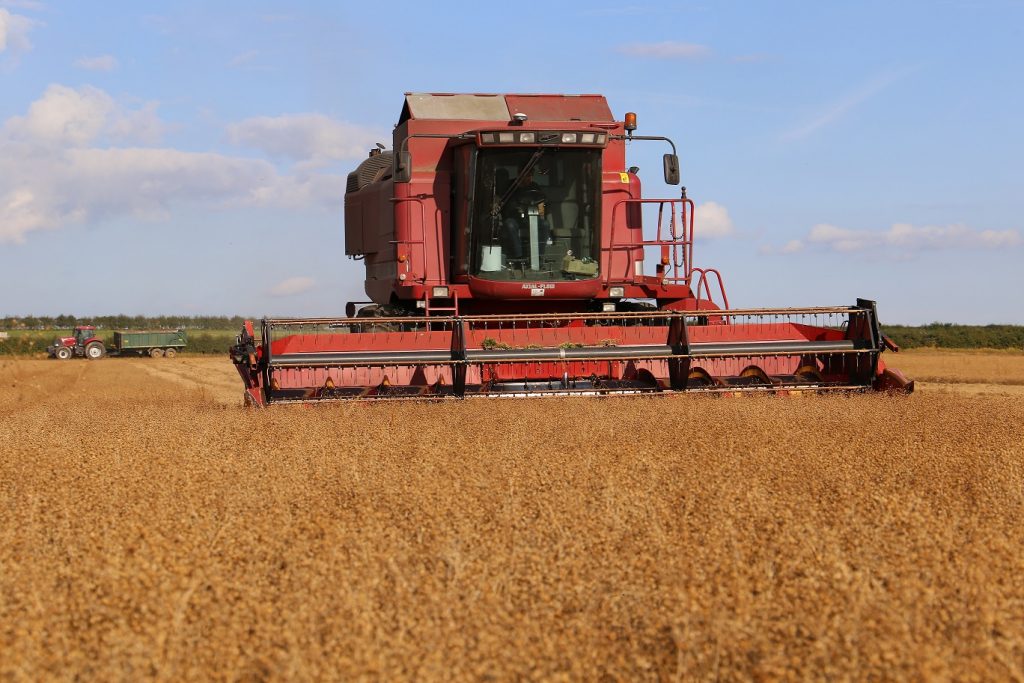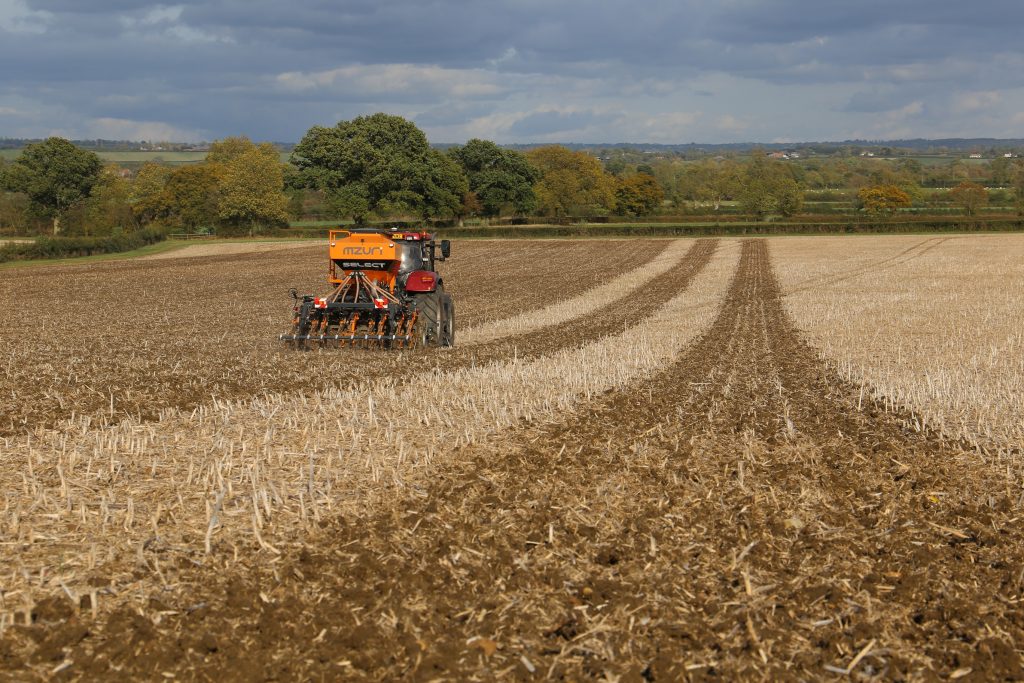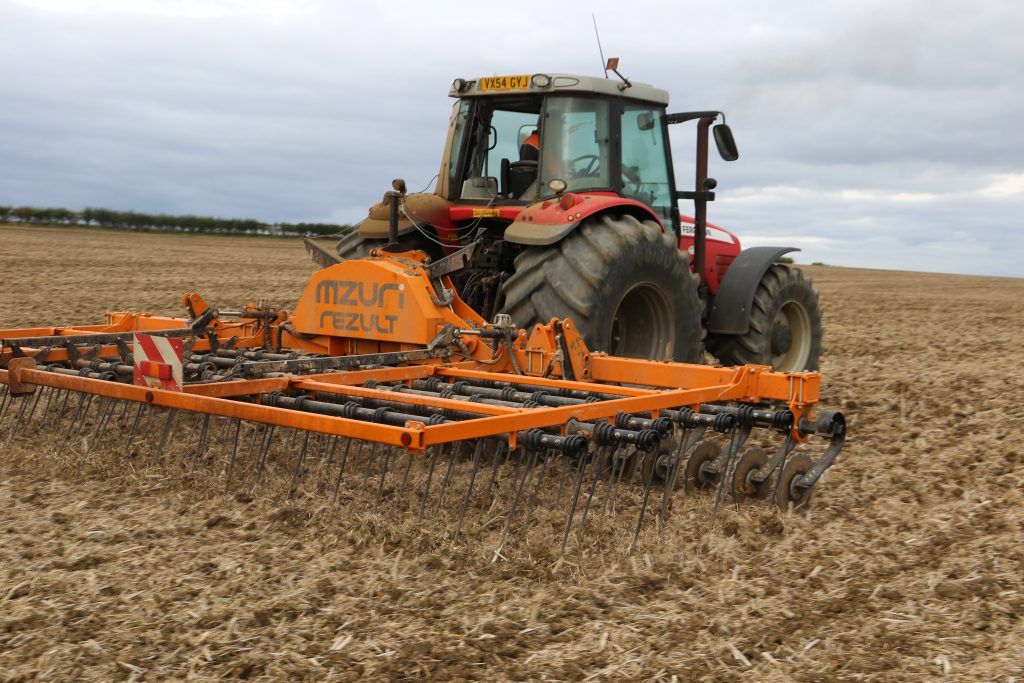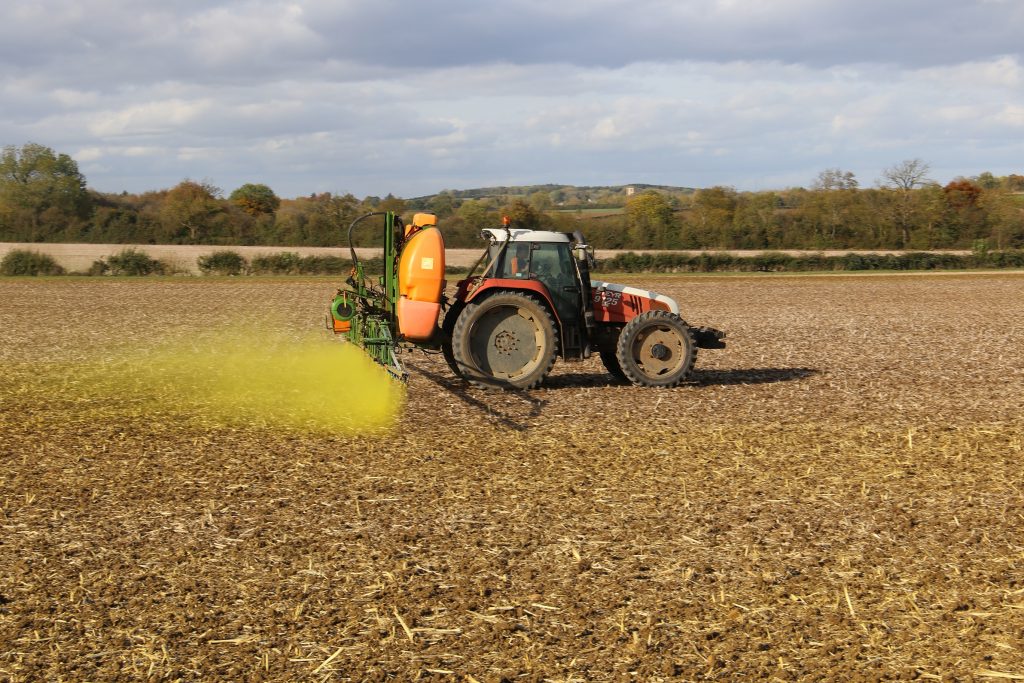Early October has been all systems go. From drilling and pre-ems to finishing Linseed harvest and starting the Soya!
Later than planned, the Linseed is in, but not without its difficulties. With such a fibrous crop our combine struggles to cope, making for a two-step forward one-step back approach to harvest! This, combined with the less than perfect weather meant harvest was a slow and laboured affair. That being said, we’re happy with the sample and it’ll be leaving the farm shortly.
It has come as no surprise that we will not reach last year’s yield. Due to the wet weather and the stop/start harvest we lost a lot of linseed out of the back of the combine. Across the board we achieved 2.5t/ha which isn’t all bad but less than we had hoped for. However, we are impressed with the quality of the sample, achieving over 45% Oil Basis, less than 2% Admixture and 8.5% Moisture. Perhaps it really is a case of quality over quantity!

Linseed harvest wrapped up for another year
The recent break in the wet weather has meant I could crack on with drilling Winter Wheat. This last week, it’s been going into OSR stubbles which have been cleaned by the Rezult rake and Glyphosate earlier in the season, producing a clean, stale seedbed. I’ve been drilling late into the night to make the most of the weather and the Pro-Til has served me without fail, getting the job done when needed.
Again, I’m drilling Costello at a rate of 180kg/ha and 150kg/ha of 0.24.24 with 3kg/ha of slug bait. I made the decision to return to the Rezult rake for the final time after drilling. With it too wet to roll, I felt the rake would produce the perfect even mulch, giving a smoother finish to make the most of the pre-emergence. It has worked wonderfully and proven testament to the design of the rake, turning its hand to many tasks in the farming calendar.

Drilling Wheat into OSR stubbles with the Pro-Til 3T

Raking after drilling for an even mulch coverage and finish
Heavily anticipated, and perhaps slightly feared, we’ve started combining the Soya! Running the header close to the ground to try and save as many of the low pods as possible, we cleared the majority trouble free. The pods were brittle and separated well, to leave a clean sample in the tank.
We’re not sure what to expect from this harvest and time will tell as we tackle the last field. It certainly hasn’t been an ideal year for growing Soya, with the cooler air and lack of sunlight. I’m quietly impressed with this crop considering we almost killed it with a Post-emergence herbicide. With the low stature of this year’s crop, I estimate that we will lose 25% of the pods to the knife, and have yielded 1t/acre with an aim of 1.5t for next year.
There are two take home messages I’ve learnt from this season. 1, to roll the ground after drilling; stones have been an issue with running the header so close to the ground, and a flat seedbed is vital for good Soya production. And 2, to get a better understanding of the available chemistry for the crop to make the most of its potential.

Harvesting the Soya has been a relatively smooth affair
A few days later I went in with a cocktail of herbicides and Azural as a pre-emergence to dampen weeds and germinating volunteers. Leaving things a little late, (or perhaps crops establishing too quick!) I had to opt for Post-emergence on the remaining fields such as the Wheat after linseed. Our agronomist has been very forgiving, chopping and changing recommendations as and when we get around to apply them!

The unmistakable Crystal colour
A thick, swathe of green cover the Radish mix is doing well. Eight weeks on from drilling, the cover crop is flowering and standing tall. With small purple and white flowers the crop makes for a refreshing scene, long after many flowering plants have passed over. It certainly has to be beneficial for insects at this time of year and dare I say it, better than a ploughed field!

Radish in flower